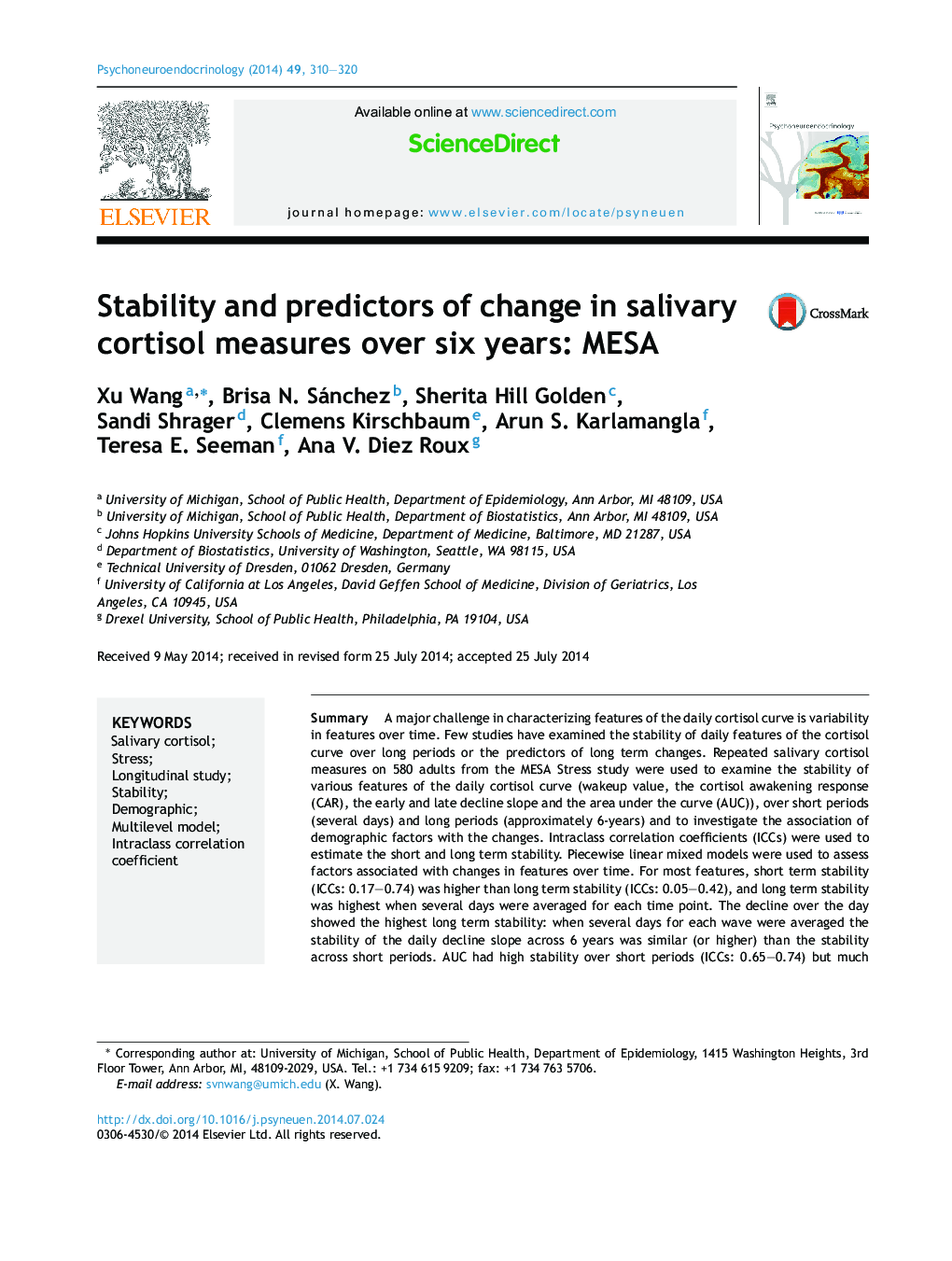| کد مقاله | کد نشریه | سال انتشار | مقاله انگلیسی | نسخه تمام متن |
|---|---|---|---|---|
| 6819597 | 547411 | 2014 | 11 صفحه PDF | دانلود رایگان |
عنوان انگلیسی مقاله ISI
Stability and predictors of change in salivary cortisol measures over six years: MESA
دانلود مقاله + سفارش ترجمه
دانلود مقاله ISI انگلیسی
رایگان برای ایرانیان
کلمات کلیدی
موضوعات مرتبط
علوم زیستی و بیوفناوری
بیوشیمی، ژنتیک و زیست شناسی مولکولی
علوم غدد
پیش نمایش صفحه اول مقاله

چکیده انگلیسی
A major challenge in characterizing features of the daily cortisol curve is variability in features over time. Few studies have examined the stability of daily features of the cortisol curve over long periods or the predictors of long term changes. Repeated salivary cortisol measures on 580 adults from the MESA Stress study were used to examine the stability of various features of the daily cortisol curve (wakeup value, the cortisol awakening response (CAR), the early and late decline slope and the area under the curve (AUC)), over short periods (several days) and long periods (approximately 6-years) and to investigate the association of demographic factors with the changes. Intraclass correlation coefficients (ICCs) were used to estimate the short and long term stability. Piecewise linear mixed models were used to assess factors associated with changes in features over time. For most features, short term stability (ICCs: 0.17-0.74) was higher than long term stability (ICCs: 0.05-0.42), and long term stability was highest when several days were averaged for each time point. The decline over the day showed the highest long term stability: when several days for each wave were averaged the stability of the daily decline slope across 6 years was similar (or higher) than the stability across short periods. AUC had high stability over short periods (ICCs: 0.65-0.74) but much lower stability across long periods (ICC: 0.05). All features of daily cortisol curve investigated changed significantly over the approximately 6 year follow-up period. The wakeup cortisol became higher; the CAR became smaller; both the early and late decline became flatter; and the AUC became larger. Hispanics experienced significantly larger increases in the wakeup value; and African-Americans and Hispanics showed less flattening over time of the early decline slope than Non-Hispanic Whites. Our findings have implications for characterization of features in studies linking cortisol to health outcomes. The presence of variability over time suggests opportunities for future investigation of the predictors of changes over time as well as the links between these changes and health outcomes.
ناشر
Database: Elsevier - ScienceDirect (ساینس دایرکت)
Journal: Psychoneuroendocrinology - Volume 49, November 2014, Pages 310-320
Journal: Psychoneuroendocrinology - Volume 49, November 2014, Pages 310-320
نویسندگان
Xu Wang, Brisa N. Sánchez, Sherita Hill Golden, Sandi Shrager, Clemens Kirschbaum, Arun S. Karlamangla, Teresa E. Seeman, Ana V. Diez Roux,